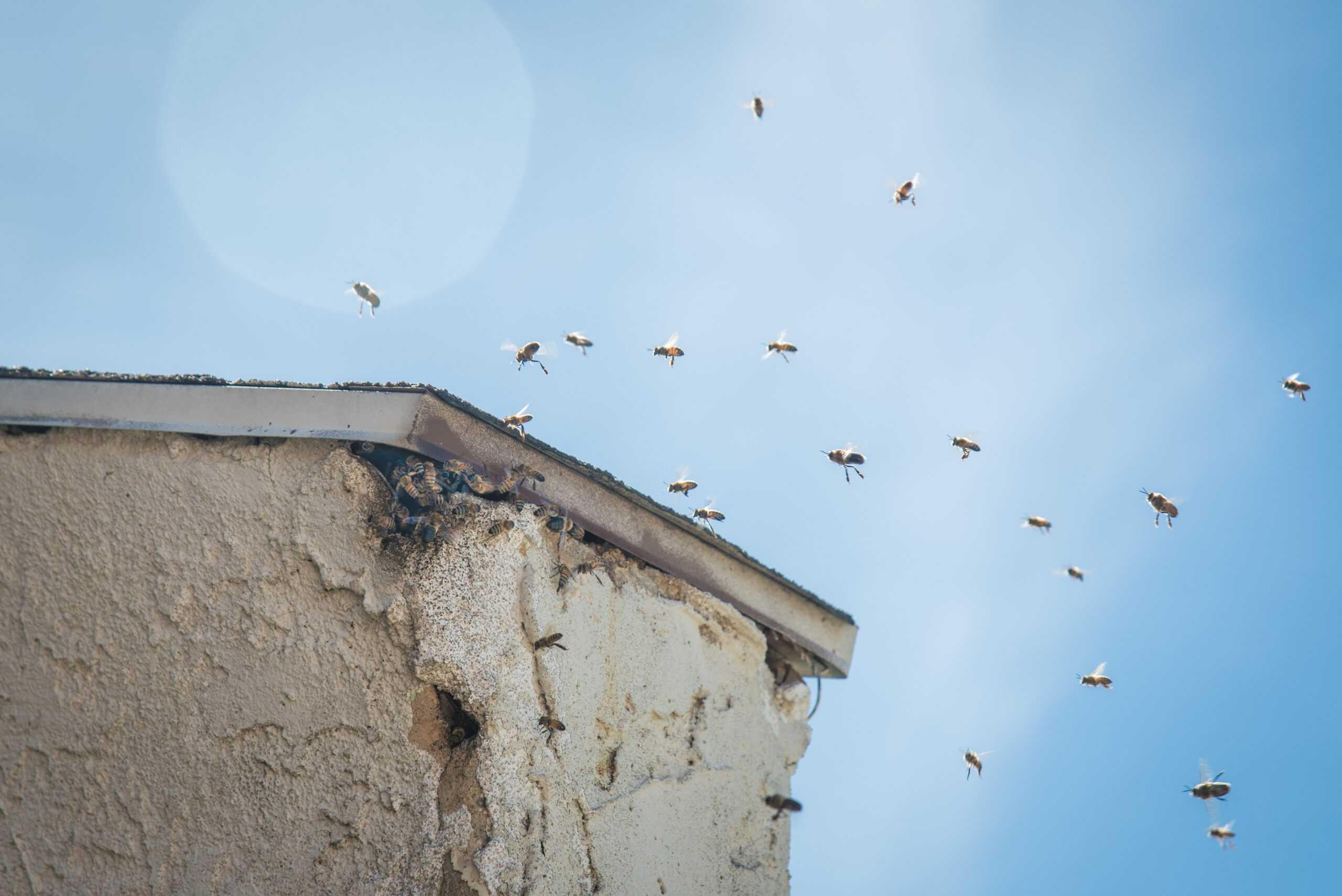One of the first things a bee technician does when they arrive on a property is to determine the age of the beehive that needs to be removed. When a beehive is completely exposed, the size, shape, and other factors can tell the age, but when a beehive is in a wall, attic, or roof, it takes someone trained in beehive removal to estimate the age accurately. Why does all this matter? Well, most property owners find out there is a beehive in their home, and they want to know how expensive it will be to get it fixed. The cost of removing a beehive from within the structure depends on the age of the beehive, which varies depending on the complexity of how large the hive is and where it is located. The older a beehive, the longer bees have been running freely inside the structure, and the beehive will be more significant and bees more protective. It is critical to hire a professional bee removal company to remove a beehive from within any structure.
Even if you think you know how big the hive is, you will likely be surprised once it is fully exposed – and if you are untrained and unprepared, this can be dangerous and cause more damage than necessary.
Ways to Determine the Age of a Hidden Beehives
Having a beehive removed does cost money, especially when the hive is well-established and has been there for a while. Only trained bee technicians can estimate the age of a beehive, which is a significant factor when removing a hive. Qualified and experienced companies like D-Tek Live Bee Removal have tools and cameras with infrared sensors to help see inside the structure and assess the beehive's size and age. Another way that a beehive's age can be determined that is inside the structure is a landing strip. Like where airplanes enter and exit the runways, the landing strip or stain is the area outside the structure where bees land before entering. The continual landing of little feet leaves a visible stain on the wall or structure.
Landing Stains
The continual landing of little feet and bees’ abdomens rubbing Propolis on the wall near the entryway to the hive, a crack or hole they are using, leaves a stain that gets darker and grimier over time. The gap they enter is near their beehive home. If you think about having a doormat and how it gathers the dirt from shoes and feet or how heavy traffic areas on your carpet get dirtier, that is the same concept as the landing stain.
A landing stain often looks like a rub mark from charcoal when the beehive is newer and can look sticky and black if it is older and has been there longer. A darker structure or wall will make using the landing stain as a gauge of age more difficult. Experienced live bee removal companies will use professional equipment when working with a beehive inside a structure unless the landing stain is on lighter surfaces and can be accurately determined.
Beehive Removal Process Inside a Structure
Once the landing stain is located and the age of the hive is estimated based on either the use of professional equipment or the landing stain color and consistency, a section of the structure will be removed to expose the hive in preparation for removal. Often, people are shocked at the size of the beehive once it is revealed.
Bees typically build their hives from top to bottom, and they will fill the space with wax and honey as quickly as they can. The longer a hive has been in place, the larger and more extensive work will be required to remove the hive entirely. Never spray products into the hive to get the bees to leave. Not only is this approach inhumane, but you will also be much worse off after attempting this way of getting rid of the bees. If you spray a hive and get bees to leave or kill them, the hive will begin to rot. A rotting hive will smell and attract other pests and critters (but roaches this time!)

Get help with your beehive or bee swarm removal! Call Today 760-224-3040 Or 951-265-8292!
Humane and Live Bee Removal
A complete and humane live bee removal performed by professional bee technicians is the only sure way to remove a beehive entirely within a structure and guarantee the beehive won’t be re-established in that area. Yes, there may be part of your structure that must be removed, but work with companies who can re-construct the area the same day as the removal. Companies like D-Tek train all their bee technicians to do high-quality construction work and guarantee it. D-Tek partners with property owners to bee-proof the perimeter of their homes so other beehives will not have openings to get into the structure.
